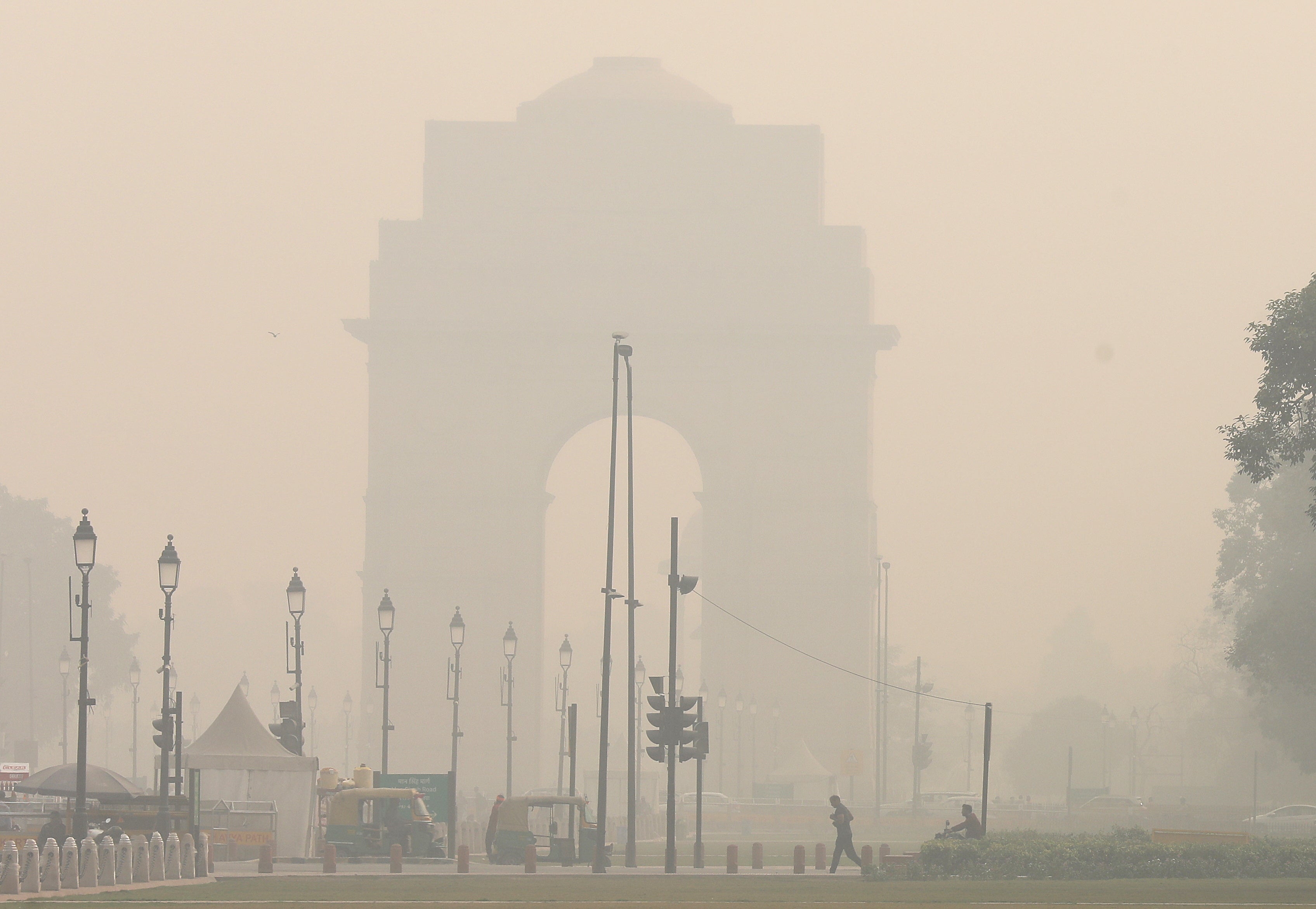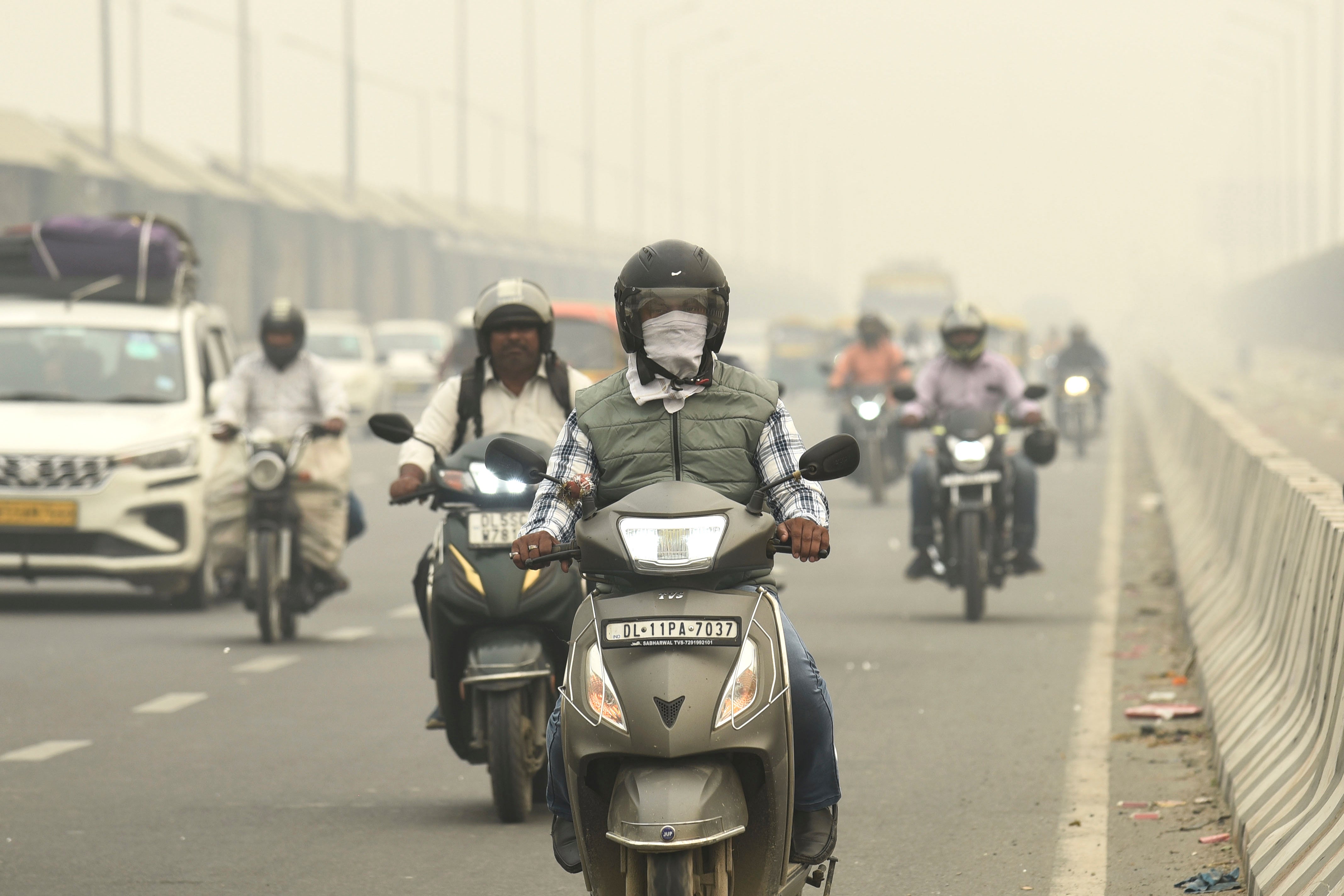Toxic grey smog blankets Delhi as air pollution spikes to 100 times WHO limit
Air pollition reaches severe level and expected to remain aggravated next two to three weeks
Your support helps us to tell the story
From reproductive rights to climate change to Big Tech, The Independent is on the ground when the story is developing. Whether it's investigating the financials of Elon Musk's pro-Trump PAC or producing our latest documentary, 'The A Word', which shines a light on the American women fighting for reproductive rights, we know how important it is to parse out the facts from the messaging.
At such a critical moment in US history, we need reporters on the ground. Your donation allows us to keep sending journalists to speak to both sides of the story.
The Independent is trusted by Americans across the entire political spectrum. And unlike many other quality news outlets, we choose not to lock Americans out of our reporting and analysis with paywalls. We believe quality journalism should be available to everyone, paid for by those who can afford it.
Your support makes all the difference.Millions of residents in capital Delhi are exposed to toxic smog as the air quality dropped to its worst, marking the beginning of winter pollution ahead of the festive Diwali season.
Primary schools have been shut and some diesel vehicles were banned from roads by authorities in the wake of worsening air pollution.
Air quality dropped to the highest “severe category” with the air quality index crossing the 500 mark already in the city home to about 33 million people.
It is 100 times more than the limit recommended by the World Health Organisation.
According to India’s National Air Quality Index, levels between 101 and 200 are considered moderate while those between 201 and 300 are poor. Anything over 300 is “very poor” and a figure greater than 500 is “severe”.
On Friday, the level of PM 2.5 – fine particulate matter that can clog lungs and cause a host of diseases – 534, according to data.

Delhi’s air – which is polluted throughout the year – turns toxic every year due to the drop in temperature in winter coupled with a rise in farmers burning paddy crop residues from their fields in neighbouring states that are carried by winds.
As a result, Delhi residents often complain of irritation in the eyes, itchy throats and running noses with the air turning a dense grey during the winter months that stretch from mid-October to the end of February.
Delhi chief minister Arvind Kejriwal said on X: “In light of the rising pollution levels, all govt and private primary schools in Delhi will remain closed for the next 2 days".
The city’s transport department announced a ban on diesel and petrol cars with engines older than 2005 and 2010 until further notice.

Delhi’s environment minister Gopal Rai chaired an emergency meeting to review the situation of pollution in Delhi.
He said the “Delhi Government is working on war-footing” but blamed pollution “sources outside Delhi” that are causing twice the pollution here than the sources within the capital.
“I appeal to the people of Delhi to use public transport including metro and buses to control pollution due to vehicles,” he said.
Pictures of Delhi covered in thick smog began emerging on social media as people described the city as a “gas chamber” and “apocalyptic”.
"In my last 24 hours duty, I saw babies coughing, children coming with distress and rapid breathing," Aheed Khan, a Delhi-based doctor said on social media platform X, formerly known as Twitter.
“The first day Delhi had bad smog this year in October, I was transiting for about an hour - ended up with burning eyes and choke and cough. It’s a killer,” said another user, Karthik Raghavan.
Delhi’s Aam Aadmi Party came under heavy criticism as residents and members of the opposition Bhartiya Janata Party denounced the Kejriwal government for failure to deal with the annual catastrophe.
The government has incorporated measures such as sprinkling of water on roads to settle the dust and building two 80ft-high “smog towers” at the cost of $2m each. However, they have been largely ineffective.
However, there will be no respite for the Delhi residents in the near future as experts say the air will deteriorate.
“This pollution level is here to stay for the next two to three weeks, aggravated by incidents of stubble burning, slow wind speed and cooling temperatures,” said Ashwani Kumar, chairman of the Delhi Pollution Control Committee.
Join our commenting forum
Join thought-provoking conversations, follow other Independent readers and see their replies
0Comments